
Discovery of the M31 [OIII] emission arc
Recently, a major discovery by an international team of amateur astronomers and scientists has become a huge online hit, and this new discovery is just located in one of the

Hello. Thank you very much for your reward, it is truly an honor.
My name is Thomas LELU, I am 39 years old, and I have been an amateur astrophotographer for 8 years now in a small village in eastern France. I was a firefighter for 5 years on a voluntary basis, I play the guitar, and I love all science. I have always been very curious about the world and the Universe around me.
When I was already a child and with my friends, we were waiting for the falling stars in summer, lying on the grass in the fields.
Astronomy has never left me since after my studies in cell biology, I graduated from the Paris Observatory. With my first job and my first salaries in clinical research on oncology, I was able to make my dream come true by buying my first telescope, a Newton 200/800 on a NEQ6 mount on which I installed a camera.
Subsequently, my family supported me in this consuming passion, and I was able to build my astronomical observatory at the bottom of the garden with the help of my brother and my father.
I also do a few evenings of astronomical presentation to the youngest children. For me, it is like our ancestors thousands of years ago to pass on knowledge.

Astronomy and Astrophotography is an open book. An infinite opening in the imagination. To be in “contact” with all these men since the dawn of time who, one day, raised their heads to look at these small luminous dots and who told a story. As in the days of ancient Greece when these small dots were “holes” in the floor of paradise. This is why I love astronomy.
Astronomy is a delicious mix of imaginary mythological stories, sciences, travels, conquest and above all mystery.
Astronomy is also a source of inspiration and well-being. Realize that we are very small in front of the immensity of the Universe. This allows you to relativize and have a certain serenity about the worries of everyday life. Strangely, it’s a way of keeping “your feet on the ground” but still having your head in the stars!
I like astronomy because sometimes it’s an opportunity to meet up with friends.
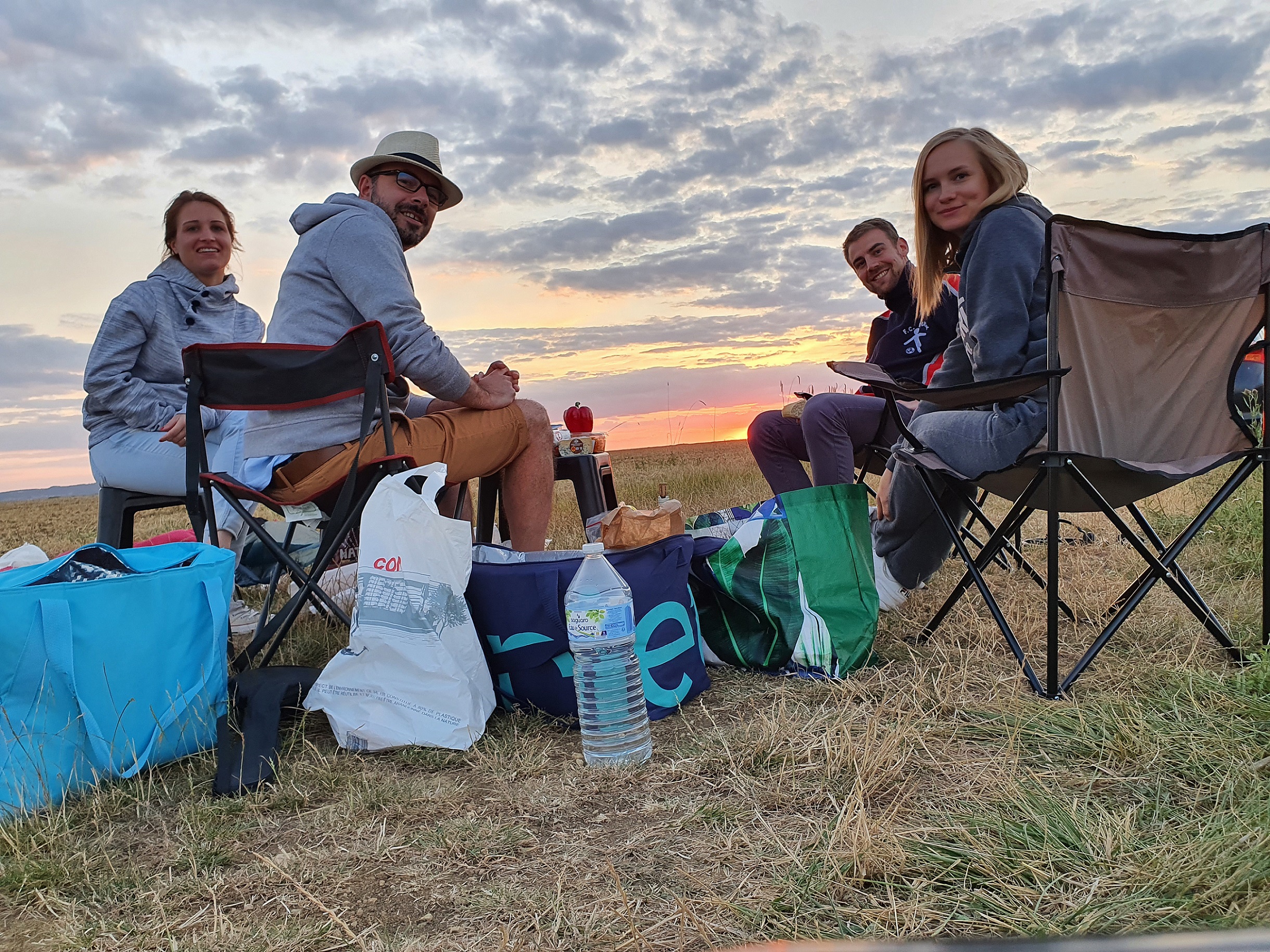
I started astronomy from a very early age using my eyes.
With my friends, we had fun counting shooting stars during summer nights. We learned the constellations and how to find our way around.
I had to wait until adulthood, and my first job was to finance my first telescope. One Newton on an NEQ6 equatorial mount. I do not know anything in the field of astrophotography and especially image processing.
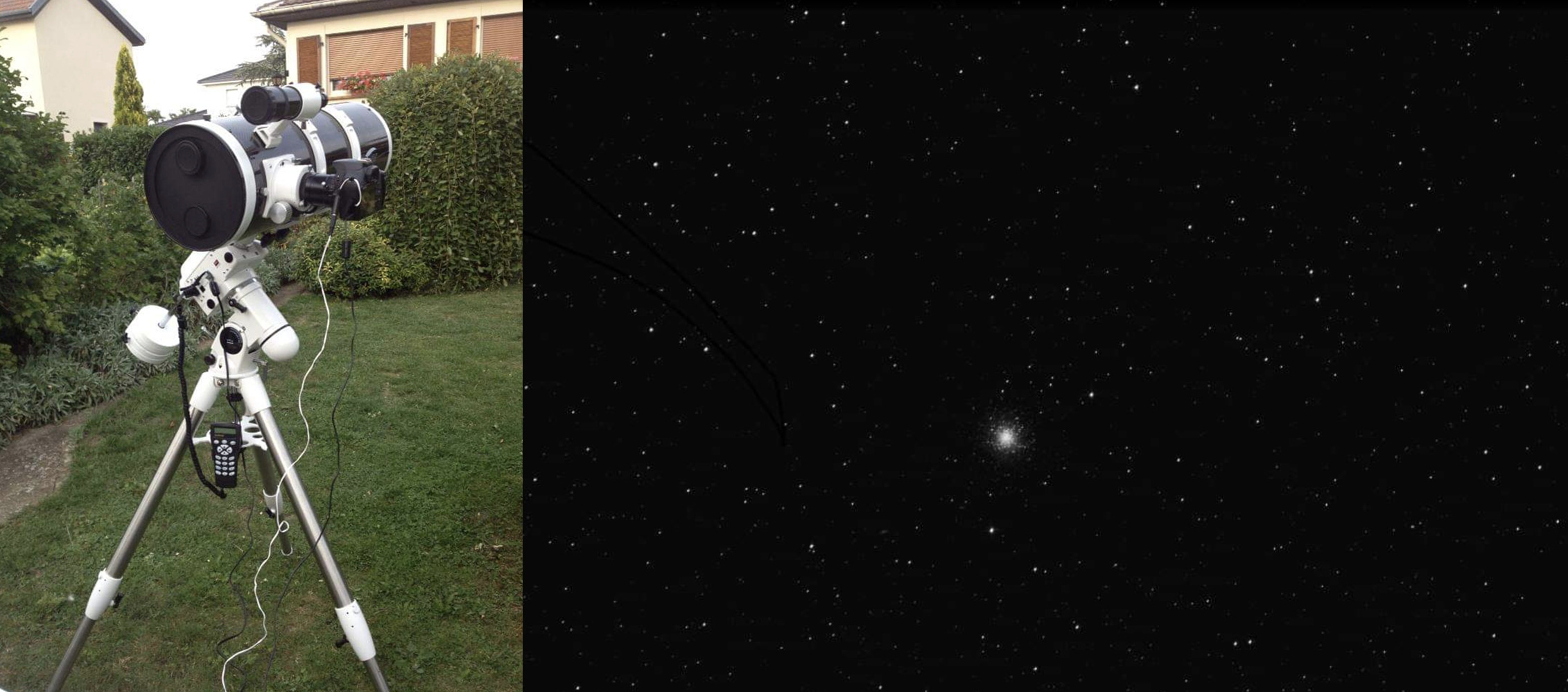
Regarding the material used to make my recent images. I am using a Newton ASA (AstroSystem Austria) at 900mm focal length with an AAF3 focuser with encoders on a Software Bisque Paramount MyT mount. The imaging camera is ZWO ASI2400MC Pro.
My autoguiding system is a parallel system with a Skywatcher ZenithStar 72ED telescope and a ZWO ASI290MM Mini camera. Even though I live in a small village where the street light goes out during the night and 25 km from a town of 100,000 inhabitants, I use IDAS filters (LPS P3 and NBZ) with the ZWO filter holder.
Everything is connected to a Pegasus astro advanced power box.


If I had to mention my preferences, in third place our natural satellite. Then the stars and the first is deep sky.
First, I photographed the Moon. It does not require much material. As soon as I had the opportunity to photograph the sky with a camera, the Moon is the closest star to our Earth and magnificent by the many craters and variations in the morphology of its surface.
In second position, the stars. Immortalizing star constellations, globular clusters or just a portion of the starry sky, was really the click to continue in astrophotography. It required more material, but it brought to light, thanks to exposures of several seconds, stars with different colors. I was amazed by my first images.
With the experience and the equipment, I then photograph the deep sky. With the experience and the equipment, I then photograph the deep sky. This is my top one.
The richness of colors and shapes immediately seduced me. In addition, the acquisition work does not stop there with subsequently all the discovery of the processing of deep sky images.
No, I don’t have a favorite. I am amazed by the beauty of the deep sky and am still so pleasantly surprised. Each target is different both in terms of colors and their structure. I still have a preference for nebula.

To achieve this image, I accumulated almost 27 hours of exposure time. It took me 10 nights to complete my goal and make this single image.
All controlled by TheSkyX pro software, FocusMax and MaxPilote.
Once the 171 images were centralized on the hard drive, I was able to perform the pre-processing using the AstroPixelProcessor software.
The processing was carried out using mainly Photoshop and PixInsight.
The elimination of the light pollution gradient has been made easier thanks to the use of IDAS filters. The most time-consuming part was making a starless in order to work on the nebula alone.
Indeed, the use of a Newtonian telescope imposes egrets on the stars, which makes these stars difficult to remove in order to have an image without stars. I used PixInsight’s StarNet + process to do the heavy lifting. I then refined the image by hand in Photoshop by removing the remaining stars one by one.
I then worked on two different images: an image of the nebula and an image only with the stars to then merge them. I use a screen with a color calibration probe to respect the display.
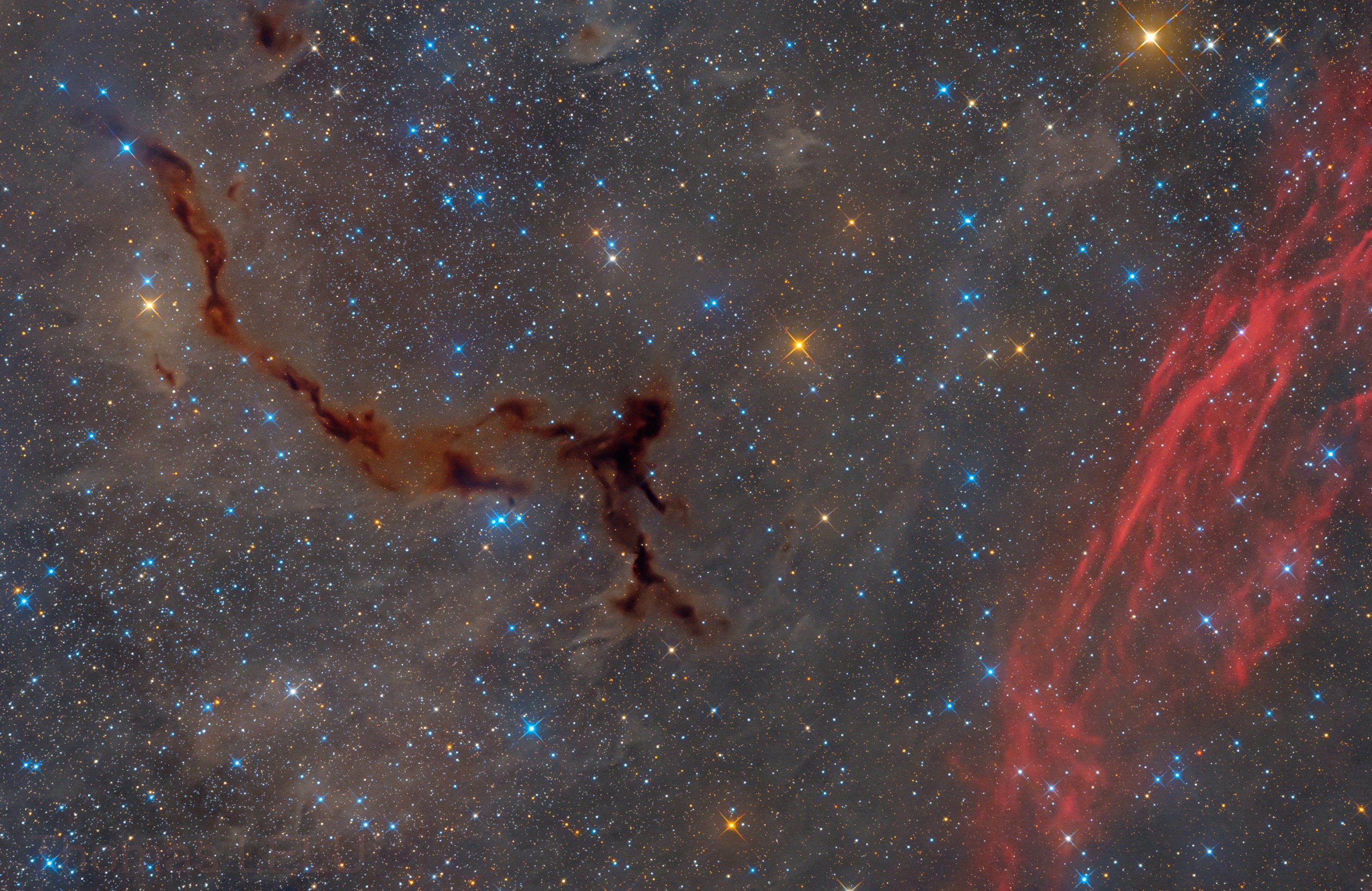
The most difficult for astrophotography is the setting of different equipment and image processing skills. Regarding the regimes, it is very difficult to know how to configure all the accessories at the start. Know how to establish a periodic error curve to correct frame defects. Know how to produce DARK, OFFSET and FLAT images in good condition (especially FLATS). It is also necessary to have computer skills because everything is managed by software.
Having great raw images is not enough. If you are not comfortable processing images, you will not come up with something pleasant. So, the difficulty is to have all these skills simultaneously to obtain a beautiful image.
No, I built my observatory at the end of the garden. In addition, dark places without light pollution are becoming increasingly rare. I move away a bit during the summer to take pictures of our Milky Way.
I took part in a few training courses for image processing, but what I prefer is passing on knowledge.
So I hosted several evenings to present some concepts of astronomy to children.
Planetary lighting increases by 2% per year. The dark night disappears little by little, caught in the light of the cities. I find that really sad. On the one hand for sky lovers but also for disturbing consequences on biodiversity but also on our health. Migratory birds differ in their movements. Some nocturnal species can no longer feed in these areas too bright. According to the new World Atlas of Light Pollution, more than 80% of humanity would live under flooded artificial light and a third of the Earth’s population would never see the Milky Way.
But even in places that appear very dark, with long-exposure images, there is still light pollution on the horizon.
Not to mention the Starlink project and other satellites that are even more likely to swirl our skies. I hope we will have a collective awareness of all its problems. Because finding technological solutions to mitigate these effects is good, but it does not eliminate the problem at the source.
When we met, I had built my observatory, but it was not automated.
My wife had given me an electric heating blanket for the cold nights. She would come to the observatory and fall asleep with me with the electric blanket on.
Now that the observatory is automated, we stay warmer.
I am lucky to have a woman who accepts and supports me in my passion. She gave me the best gift in the world, a son, Jules.
Before I can teach her astrophotography, I hope I can show her the Milky Way before it disappears and teach her about the constellations and associated mythology.
Why not, later, if it interests him, we can take pictures together.
I have a total of three ZWO ASI cameras. My main camera (ASI2400MC Pro) on my telescope. My ASI290MM Mini autoguiding camera on my parallel mounted telescope. I also have an ASI224MC which I use as Allsky. My first ASI camera was my autoguiding camera. I wanted to switch to the new color CMOS sensor for my main camera. Indeed, under my sky, it was a waste of time to photograph with a monochrome camera. I purchased the ASI2400MC Pro this summer. Despite a fairly high price, I am fully satisfied. Finally, I built an allsky from the ZWO ASI224MC camera. This camera is widely used by allsky owners. The noise is low and allows me to raise doubts about the clouds.

ZWO has moved the lines in the market for cameras dedicated to astronomy. It is a very good thing. The brand is now recognized around the world.
I was reluctant for my first purchase. Now my main camera is a ZWO camera, and I am very happy with it.
This year, I had the honor of having my images awarded at the level of the astrophotographer community (ASIWEEK, AAPOD², APODGrAg, Astrobin).
I manage to make about 1 image per month. This year, I had the honor of having my images awarded at the level of the astrophotographer community (AAPOD², APODGrAg, Astrobin).
I manage to make about 1 image per month. I hope to be able to do more in 2022 but I am completely dependent on the capricious weather of the north-east of France and especially always take so much pleasure to photograph the sky. And maybe redo an APOD like in 2016.

I do not yet have enough experience with ZWO cameras to have a representative opinion. I hope all the time that the material is efficient enough over time. I sometimes read mounting issues with the CMOS PCB which was not screwed on some cameras over $ 3000. So in view of the price, perhaps have a greater vigilance on the material at the level of the production line. For my part, I am very satisfied with ZWO, but a brand must also make its prestige at the after-sales level. I hope that I can make no request at this level. ZWO now has my full confidence. I will no longer hesitate to buy a ZWO camera.

Recently, a major discovery by an international team of amateur astronomers and scientists has become a huge online hit, and this new discovery is just located in one of the

I was born in Guadalajara, I’m 38 years old, a musician, communications and electronics engineer, and president of the Guadalajara Astronomical Society A.C. since 2020. First Contact with Astronomy Since
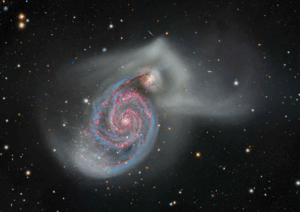
This stunning collaborative project comes from astrophotographers Alex Linde and Thomas Hansson, who joined forces across borders to photograph the Whirlpool Galaxy from Sweden, Poland, and Texas, USA. Thomas traveled across
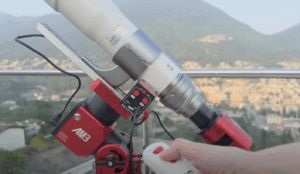
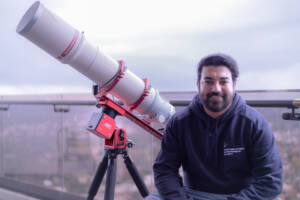
“Two thoughts immediately crossed my mind—the vastness of the cosmos, and that I could also create images like the ones that inspired me.” ” If you spend more time debugging than
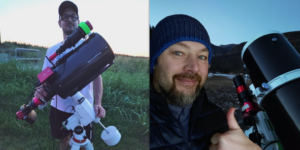
Starting the Journey For Giovanni Pasquetto, the passion for the cosmos began in 2007 when he bought his first telescope—a small Newtonian—for his son. That initial curiosity sparked a love
2 Comments
Elena
I’m very happy to know Thomas and his wonderful family personally. Such an inspiring story of a man lead by his passion and blessed with love. May there be many more achievements and discoveries!
Lismarie
I just found this article and read it with a lot of pleasure. I met Thomas and his wife a couple of times too and had the opportunity to discuss a little bit about his passion but I totally ignored how far his passion goes and the accomplishment in the last 2 or 3 years. How inspiring! Curiosity is for me the best thing in life and sharing it with other people in particular children IS the best thing he does. This, sharing real passion, IS very rare today. Maybe my son will be one day in one of his discovery classes…this would be so great. I chose astronomy in school for 1 year in Germany…almost 25 years ago and I loved it …and to discover the evolution today in techniques through his pictures impresses me. What a great work and these colorful Dark night pictures or the Milky Way pictures and even the light pollution picture are wonderful. I Hope our respective families will meet one day again to discuss or better listen to his stories full of knowledge.